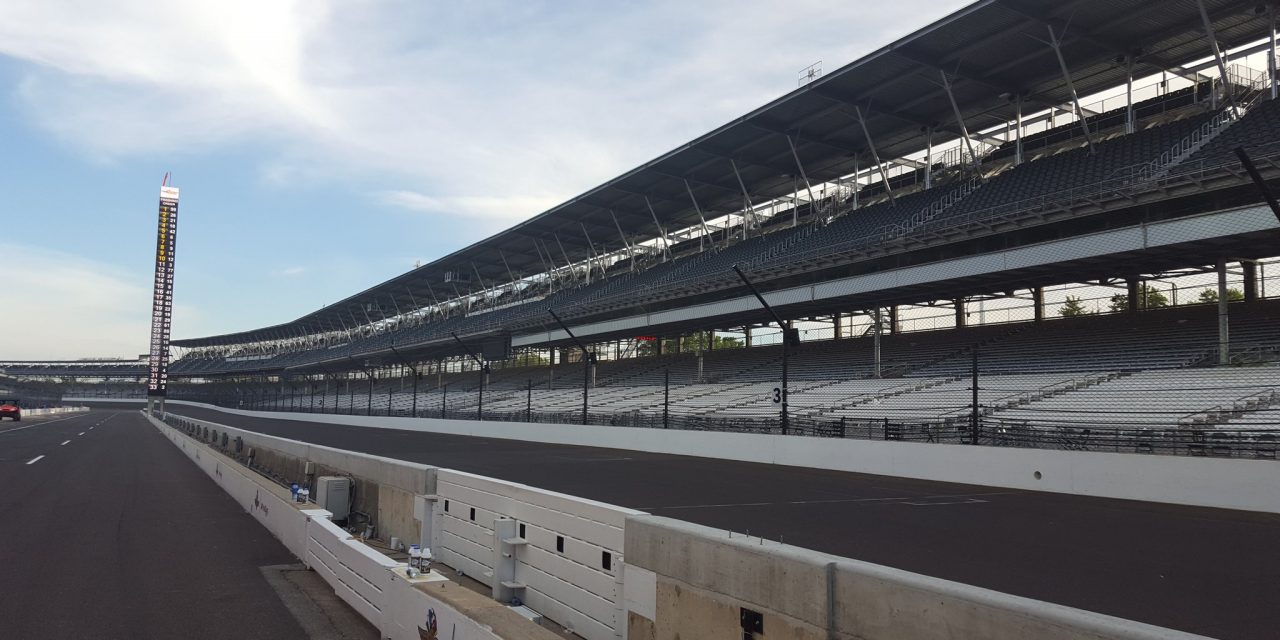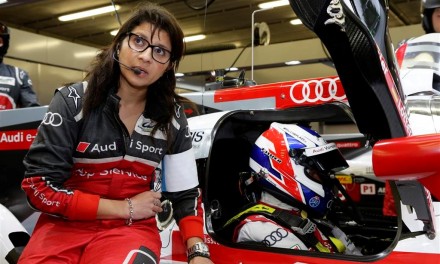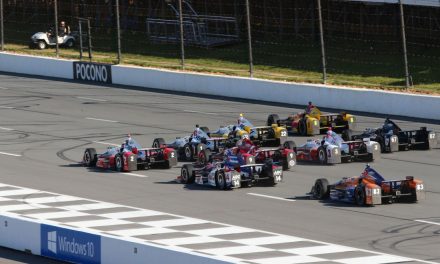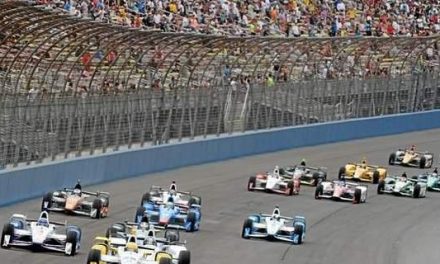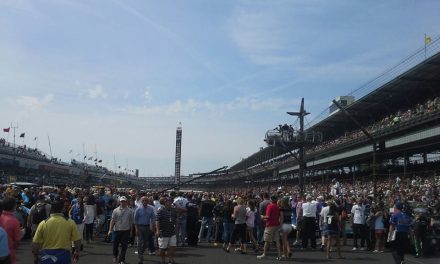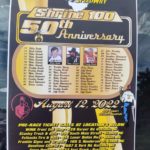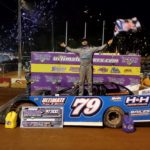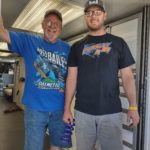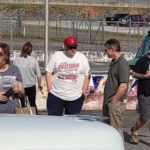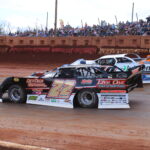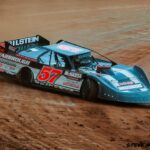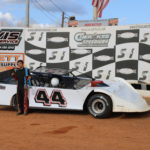Story and photo by Patrick Reynolds
Man, I hated history classes in school. I could not wait to get out of there.
I sat in hard, uncomfortable one-size-fits-all chair and desk combination furniture and listened to teachers drone on and on about was happened decades ago. My reaction was similar to other middle school and high school students.
Who cares?
Age and experience in life have taught me to care. Today, I certainly wished I paid more attention to those teachers that cared even if I didn’t. They were full of knowledge and were eager to share. I wish I studied and remembered more about world history and American history. Today I make up for it by reading, when I can, some fascinating history stories which I likely already read as a teenager but tried to breeze through.
My passion for motorsports always grabbed my attention to read about that topic. Age and experience have taught me to reach and grasp for historical knowledge. The more I know, the more I want to know.
An eager student would feel an endorphin rush entering the National Museum of American History in Washington D.C. and all the information there for the taking. I, an auto racing aficionado, enjoyed interactive information fervor over Memorial Day weekend.
Welcome to the Indianapolis Motor Speedway.
There were simultaneous activities and gatherings for many days leading up to the highly-anticipated 100th 500. Some were the jacket-and-tie variety. Jeans and t-shirts were welcomed at others. I was fortunate to attend both types.
I put a crisp suit on Thursday for Auto Racing’s Hall of Fame dinner. Honored were four-time Indianapolis 500 champion Rick Mears, and inducted were RacersReunion friend Paul Goldsmith and U.E.- better known as “Pat” Patrick.
Mears is largely regarded as one of the best to ever turn laps around the Brickyard. His laps led, laps completed, and rarity for crashing during his thousands of miles at 200-plus miles per hour make him highly respected among Indy’s most successful. Drivers Tom Sneva, Johnny Rutherford, and Danny Sullivan spoke profoundly of Mears.
Goldsmith was a winning driver on two and four wheels. He was a championship motorcycle and stock car driver. Two of his many career highlights were, a third-place Indy 500 finish and winning the final stock car race on Daytona Beach, prior to the International Speedway opening.
Patrick owned Indy 500 winning cars for drivers Emerson Fittipaldi in 1989 and Gordon Johncock in 1973 and 1982. The pair of 500 wins for Johncock were, as Speedway Historian Donald Davidson said, “a race no one wanted to remember (’73) and the finish none of us could forget (’82).”
The day before the 500, my sneakers and short sleeves fit in quite nicely while browsing the Speedway’s memorabilia show. Unlike a historical library, there was no need to search for printed newspapers. My eyes saw two front page headlines hanging from the wall before the entrance door even shut behind me- Sam Hanks’ win in 1957 and Graham Hill’s win in 1966.
Tragedy in the earlier days of motor racing is also documented. Detailed literature is available about the deaths of Bill Vukovich, Pat O’Connor, and sadly but factually, others.
Author Bones Bourcier was with publisher Coastal 181 and Lew Boyd with newer books available about USAC standout Dave Darland and 1963 500 champ Parnelli Jones. Along with many other available books, who was there to talk to show attendees? Why, Dave Darland and Parnelli Jones.
If you wanted their books, fantastic, there were plenty of copies with motorsports history. If you wanted to talk or ask them anything in person, even better. Here they were, in the flesh and happy to talk to anyone.
Track programs, archival newspapers, and original magazines from decades of Indy 500 coverage, were- much like my school history class information- ready and available for the taking. The memorabilia show was a figurative speedway history goldmine.
For museum style information and displays, Indianapolis Motor Speedway has- a museum.
About anything you would like to know about the Speedway and in particular the history of the 500 can be found here. Did you know that…?
- On June 5 1909 the first event was held on the speedway property. It was a balloon race.
- On Aug 14 1909 motorcycles raced on a crushed tar surface.
- On Aug 19-21 1909 the first auto races were held. Multiple crashes led to the decision of paving the track surface.
- The surface consisting of 3.2 million bricks was laid later in 1909.
- The first garages were constructed in 1910.
- The first 500 Mile International Sweepstakes was held May 30, 1911.
- In 1936 Louis Meyer became the first three-time winner, was awarded the first Borg-Warner trophy, and drank the first winner’s milk. His Mom taught him a glass of buttermilk will refresh you on a hot day. Indiana’s Dairy Council capitalized on that, providing the winner a drink of milk from 1936 to 1946. The 500 was suspended during World War II and then the milk tradition has continued from 1956 until today.
- Dan Wheldon’s 2011 winning car is in the museum and the two-time winner’s tragic story is told.
- Rookies won the first, 50th, and 100th running of the 500 respectively with Ray Harroun, Hill, and 2016’s Alexander Rossi.
- Rossi was the first American-born rookie to win since Meyer in ’36.
- I could write a lot more as there is a lot of history that could fill many pages of books. As a matter of fact, they do fill many pages of books.
Displays showcasing cars and Indianapolis personalities are rotated with frequency to tell the many tales of the Speedway. Mexican open wheel star known for his success with CART, Adrian Fernandez was seen walking through the crowded landmark.
Other drivers seen walking around and pretty welcoming of any racing enthusiasts’ questions were Scott Speed, Willie T. Ribbs, Janet Guthrie, Mario Andretti, Bobby Rahal, and an ongoing list of champions and participants.
The Indianapolis Motor Speedway is a place where racers and fans alike connect with deep rooted passion.
The track is respected and revered. History waits for the taking. All anyone has to do is be present and much will come to light. The Indianapolis 500 is best not taught in an uncomfortable desk and classroom with a lecture. This is knowledge that is best experienced. And it can be.
Now, I care.
Borrowing a line from a short film shown in the IMS Museum-
This is no mere racetrack. A spirit dwells here. This is hallowed ground.
This is Indy.
Man, I love History. I cannot wait to learn more.
Patrick Reynolds is a former professional NASCAR mechanic who hosts Speedway Report Mondays 7:30 pm ET/ 4:30 pm PT on www.racersreunionradio.com. Follow on Twitter @SpeedwayPat and @SpeedwayReport

